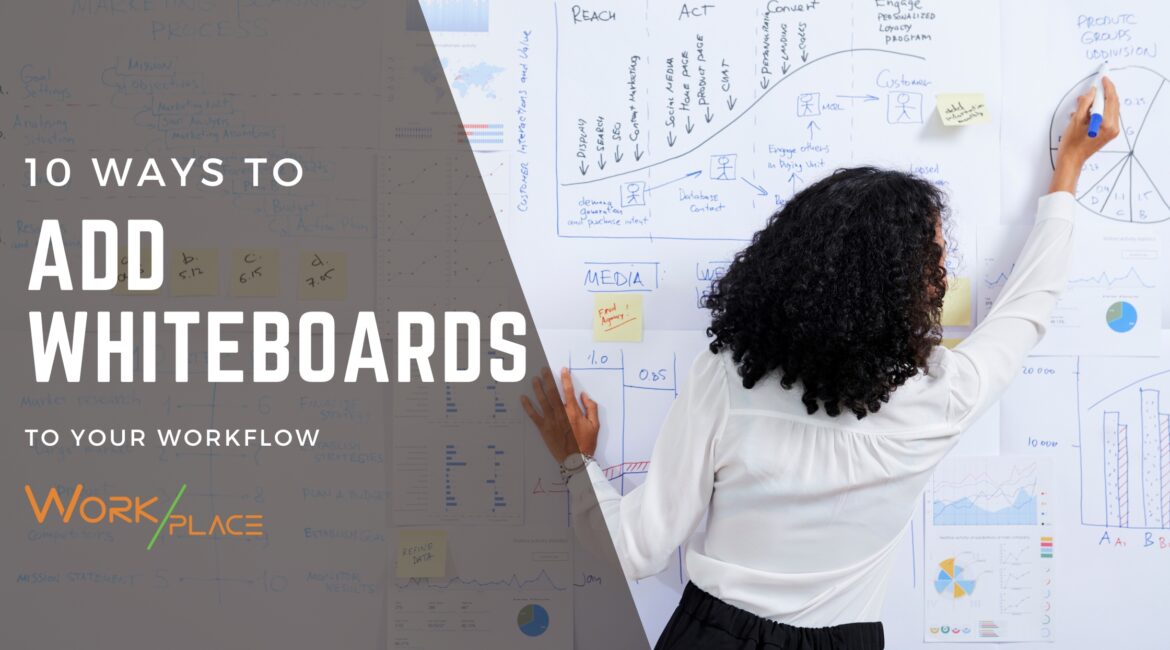Whiteboards have become a staple in today’s office environments. From creative companies slathering an entire wall with whiteboard paint for open brainstorming to large whiteboards on wheels (and we should mention digital whiteboards!), these versatile blackboard replacements can do a lot more than just keep your fingers free of chalk dust.
At Work/Place, we have whiteboards that are accessible and open for use. What coworking space would be complete without these versatile writing and planning tools? Using office whiteboards can help boost creativity and lead to new ideas. Scribbling plans, creating lists, and mind mapping on a whiteboard can help with memory, focus, and problem-solving.
Let’s look at some ways you can creatively use whiteboards the next time you’re coworking with us:
Mind mapping. Mind mapping is an effective creative technique to capture thoughts and connections. Start with your main idea in the center of the board and spiderweb all the way out, connecting each branch and subtopic until you form a seamless plan.
Idea collaboration. Use a whiteboard the next time you need to have an open brainstorm with your team. Grab your dry-erase markers and color-code thoughts and ideas and flesh out concepts as a team.
Editorial calendars. Maintaining a blog, magazine, social media, or podcast? Use a whiteboard to organize your editorial content ideas for blog posts, story titles, podcast show themes guests, and more.
List making. Use a whiteboard to keep lists for just about anything.
Kanban boards. Whiteboards are great for scrum-based project management. Draw four horizontal lines on the board and cross-section the top to leave yourself with four squares. Write Queue, To Do, Doing, and Done in the spaces. Then use sticky notes (or your markers) to write the tasks at hand down in their proper column. As you finalize tasks, move them to Done. This is a great way to get a step-by-step big picture of any projects you’re working on.
Vision boarding. Along with your dry erase markers, grab some magnets, sticky notes, photos, and magazine clipping. Think about where you envision your business and what you want it to look like and then place those things up on the board to review daily to inspire you.
Goal setting. Use your whiteboard to brainstorm all the goals you want to achieve for yourself, your business, or a client. Then narrow them down to the most wildly important goals.
Storyboarding. If you work in video, use your whiteboard for creating storyboards. Sketch out the shots you need and place stick notes with the necessary details needed to make them happen.
Web design. For web designers, you can use whiteboards to plan your site map, to sketch out the website layout and functionality needed, and create a flow chart of ideal use.
Page design. For graphic designers, a whiteboard is ideal for sketching out concepts. Whether you’re laying out magazine spreads, flyers, book covers, etc., whiteboards can help you conceptualize visually while saving you lots of pages.
Meeting and event planning. When you’re in a planning meeting, ideas can come at you fast. Use a whiteboard to catch all the ideas that come to you so that you go back later and organize them.
Now that you know some fresh ways to use whiteboards, add them into your workflow next time you cowork, or even at home.

